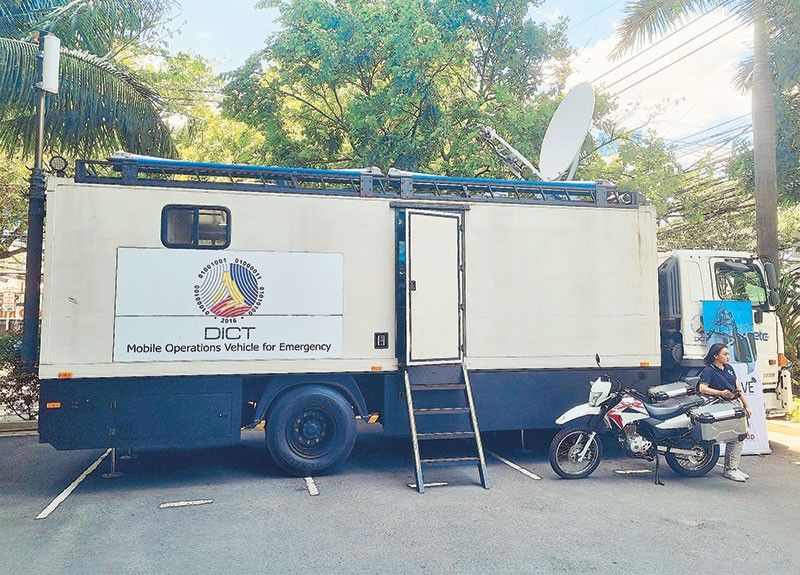Government to boost disaster response with WFP aid

MANILA, Philippines — The government is beefing its disaster-response capacity this year as it is set to receive four new emergency vehicles from the United Nations’ World Food Program (WFP).
Martin Kristensson, project manager of the mobile operations vehicle for emergency (MOVE), said the WFP is set to turnover four units to the Department of Information and Communications Technology (DICT) next month.
The four units are part of the $4.2-million second phase of the five-year Government Emergency Communication System-MOVE (GECS-MOVE) project being undertaken by the DICT and WFP.
This will now bring the DICT’s MOVE fleet to 10.
The units are high-tech trucks that can be easily deployed in disaster-hit areas to reestablish telecommunications and even provide emergency power supply.
These also consist of deployable vehicles such as motorcycles as well as drones to allow responders to accelerate assessment of disaster-hit areas.
The project includes necessary capacity building, training and strengthening to allow government officials to manage the fleet and operations on their own without the support of WFP.
“The whole idea is that we drive this one up to maybe a coordination hub like the mayor’s office or the DSWD (Department of Social Welfare and Development) office and supply them with an office that has connectivity and power,” Kristensson told The STAR.
“Because you do not have power after the emergency. So in here you have those services to emergency coordinators coming from the government, from humanitarian work, or from non-government organizations,” Kristensson added.
Furthermore, the MOVE units can provide free internet connectivity to people in a disaster-hit area.
The additional units will be stationed in DICT regional offices in the cities of Laoag, Tuguegarao, Iloilo and Zamboanga.
The forthcoming units from the WFP were manufactured locally unlike the first six units, which were built in Dubai.
The four new MOVE units are considered fourth generation of its kind with key tweaks made from its previous iteration aimed to improve efficiency of its operations and provide better work environment for disaster responders.
The new MOVE units have better energy usage, stronger support legs of the truck to be able to balance better on uneven ground, and has a foldable sofa bed instead of a bunker bed to accommodate more people inside the vehicle, Kristensson said.
According to Kristensson, initial talks are ongoing as the government is looking to further expand the project with WFP.
He said the next generation of MOVE units could be “smaller” to complement the capabilities of the current fleet.
These new units, he pointed out, would be “more agile” and can go on a coast guard vessel or hang under a helicopter, Kristensson said.
The GECS-MOVE project started in 2018 with the first phase costing at least $4 million funded primarily by the DICT with additional financial support from the US Agency for International Development and WFP.
WFP said the total fund of the entire GECS-MOVE project has reached over $10 million, with $7.2 million coming from the Philippine government.
The USAID, WFP and Swedish multinational Ericsson complemented the government funding with $3 million worth of equipment.
- Latest
- Trending
































